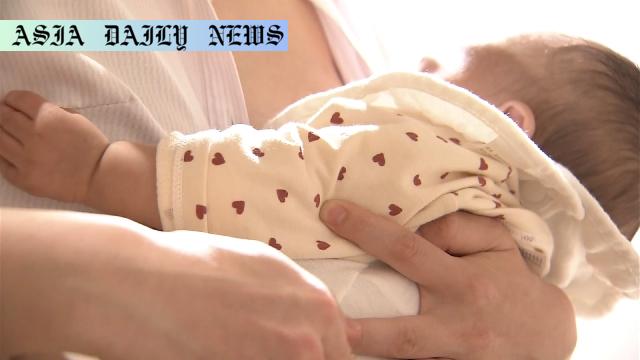Breastfeeding: Survey shows significant drop in breastfeeding rates in Japan, factors such as work-life choices shift feeding habits.
Breastfeeding rates in Japan have declined significantly over the last decade by 27%.
Formula usage rose by 12%, potentially influenced by dual-income households and evolving lifestyle choices.
The survey highlights the need for parents to balance lifestyle with nutritional benefits of breastmilk and formula.

Introduction: Survey Highlights Changing Breastfeeding Trends in Japan
In recent years, Japan has witnessed a significant shift in infant feeding practices, with a notable decline in breastfeeding rates. According to a survey conducted by the Smile Lactation Research Institute, the number of mothers relying primarily on breastfeeding has dropped by 27 percentage points over the past decade. In contrast, the use of baby formula has increased, marking a considerable change in parental preferences and societal trends.
Survey Overview and Key Findings
The online survey, conducted in October 2022, involved nearly 400 mothers raising babies aged five months or younger. Findings revealed that 51% of respondents mostly or exclusively breastfed their babies, a significant drop from the 78% reported in 2014. Meanwhile, the proportion of mothers relying primarily on formula increased from 17% to 29% during the same period. These statistics suggest fundamental changes in how families approach infant nutrition, with various factors contributing to this trend.
Factors Driving the Shift
Experts believe that several factors have influenced the increasing adoption of formula feeding. One major driver is the rise in dual-income households, where both parents juggle professional responsibilities. As fathers take on more feeding responsibilities, formula becomes a practical option, reducing pressure on mothers. Additionally, mothers are returning to the workforce earlier, leading to a greater reliance on formula. Moreover, societal attitudes toward formula feeding have evolved, with many parents perceiving it as a convenient and nutritionally sound alternative to breastfeeding.
Breastfeeding vs. Formula: Nutritional Considerations
The survey’s findings have sparked conversations about the benefits and trade-offs of breastfeeding and formula feeding. Breastmilk is renowned for its nutritional richness, supporting immune system development and providing unique health benefits for infants. On the other hand, modern baby formulas are formulated to be nutritionally balanced, offering a convenient alternative enabling flexibility for working parents. Tokyo University of Information Sciences professor Ichikawa Kaori, a participant in the survey, emphasized that both options have their merits. She advocates for informed decision-making by parents based on their family’s needs and lifestyle choices.
Implications and Future Directions
The decline in breastfeeding rates may carry implications for public health policy and parental education. Healthcare providers and policymakers must ensure that both breastfeeding and formula-feeding families receive adequate support. Initiatives to help mothers balance work and family life, such as expanded parental leave or workplace accommodations for breastfeeding, could promote informed choices. Simultaneously, fostering awareness about the benefits of both feeding methods can empower parents to make decisions that align with their unique circumstances and priorities.
Conclusion: Striking a Balance
The survey conducted by the Smile Lactation Research Institute underscores the evolving dynamics of infant feeding practices in Japan. As societal norms and work patterns shift, the balance between breastfeeding and formula feeding continues to be a topic of interest and debate. Parents are encouraged to learn about the benefits of both methods, consider their lifestyle factors, and make informed choices that prioritize their child’s health and well-being. Ultimately, supporting families in this decision-making process is essential for fostering healthier lifestyles for the next generation.
Commentary
Exploring the Complexities of Breastfeeding Trends
The decline in breastfeeding rates in Japan is a multifaceted issue that reflects changing family dynamics, societal expectations, and personal choices. It is both fascinating and concerning to see how external factors, such as dual-income households and workplace demands, are reshaping traditional practices. While breastmilk remains a gold standard for infant nutrition, the rise in formula usage indicates a shift towards flexibility and practicality for modern families.
The Role of Socioeconomic Factors
One cannot discuss this trend without acknowledging the growing prevalence of double-income households in Japan. As more parents balance demanding work schedules, traditional roles and responsibilities are being redistributed. Fathers are increasingly stepping up in child-rearing roles, and the practicality of formula feeding makes it a favorable choice. However, this also highlights a critical need for enhanced parental leave policies and workplace accommodations to support breastfeeding mothers who wish to continue nursing after returning to work.
Education and Awareness as Key Solutions
As rates of formula usage continue to climb, there’s an urgent need to emphasize education for parents. Breastmilk and formula both have unique benefits, and parents should feel empowered to choose without societal judgment. Professor Ichikawa Kaori’s emphasis on spreading awareness about the nutritional and developmental advantages of both feeding options is crucial for breaking stigmas and ensuring informed decision-making.
Shaping a Supportive Future
Ultimately, the decline in breastfeeding in Japan serves as a reminder of the importance of supporting families through this critical phase of life. Whether through public health initiatives or corporate policies, fostering a culture that values flexibility and informed choice is vital. Encouraging dialogue, providing resources, and addressing societal pressures can go a long way in ensuring the well-being of both parents and children in the evolving landscape of infant feeding practices.


